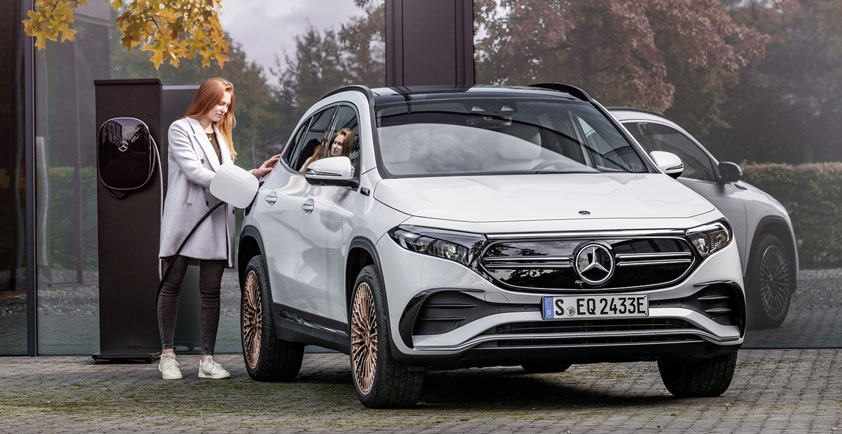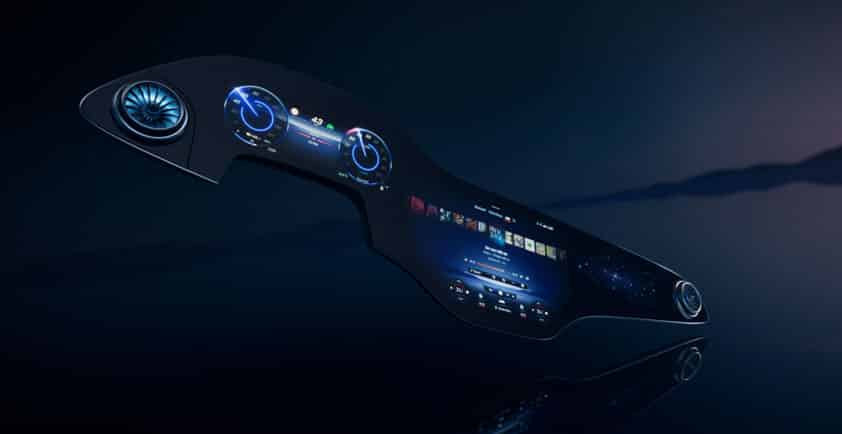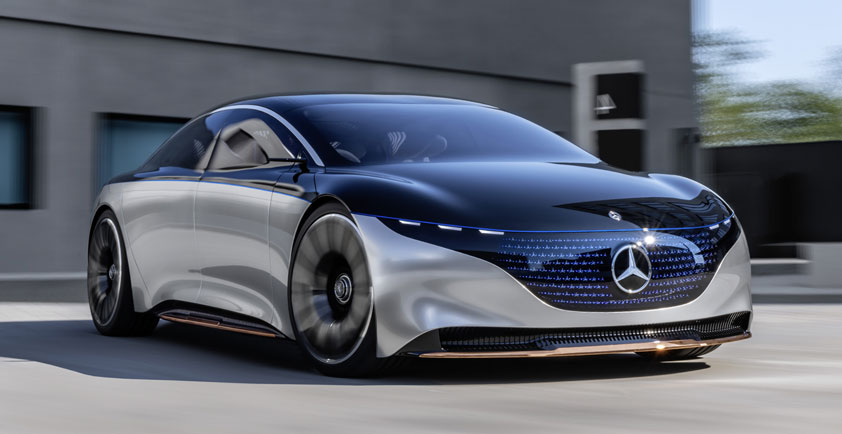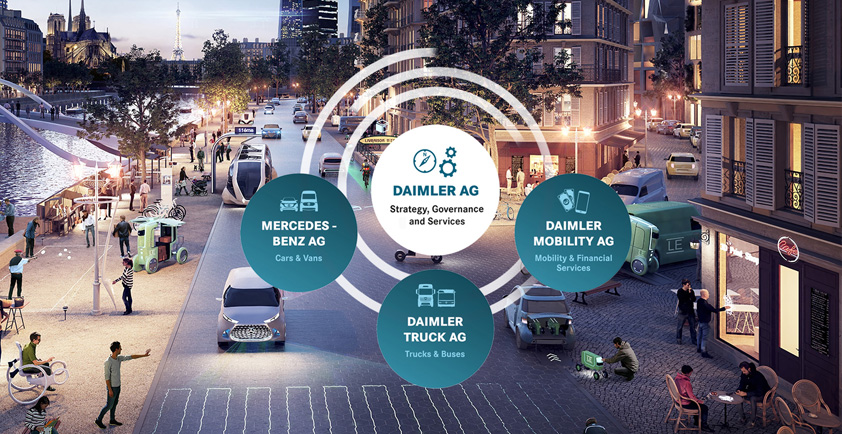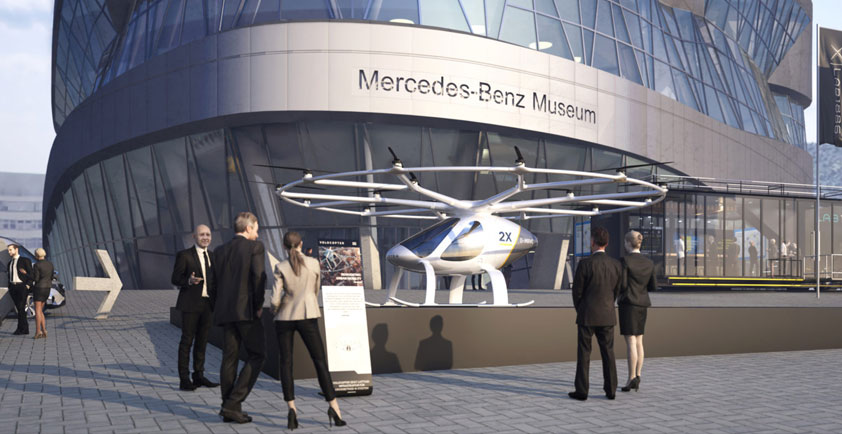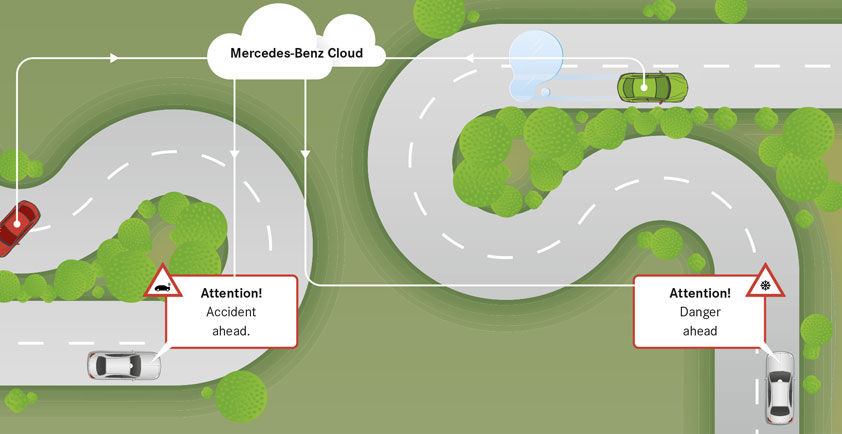

THE COOPERATIVE CAR: INTUITIVELY KNOWING WHAT THE CAR IS PLANNING
Stuttgart. Autonomous driving is going to be an integral part of mobility in the future. Mercedes-Benz considers empathy and trust to be central factors for the acceptance of self-driving vehicles. Because for people to have trust in the machine, they must immediately and intuitively be able to recognise what an autonomous vehicle intends to do. Mercedes-Benz conducts research into this "informed trust" with the help of the "cooperative car".
The cooperative car is based on an S-Class, and features 360-degree light signalling. Turquoise lights on the roof indicate autonomous driving mode, and provide information on what happens next.
> Continuous light shows that the vehicle is in autonomous driving mode, whether moving or stationary.
> Slow flashing means that the vehicle is braking.
> Rapid flashing announces that the vehicle will shortly be moving off.
Alternative light display concepts are also being tested with this vehicle: turquoise light strips in the windscreen, the radiator grille, the headlamps, the exterior mirrors and the lower area of the windows indicate to pedestrians and other road users that the vehicle is operating in autonomous mode. Short rows of illuminated dots on the roof tell other road users that they have been recognised. In the process, only those pedestrians or cyclists whose path coincides with that of the vehicle are given a light signal. In doing so, the cooperative car recreates the natural eye contact that would have taken place between the driver and pedestrians.
The cooperative S-Class also informs its surroundings that it is about to go into operation while it is still at the side of the road. The light strips around the vehicle emit an appropriate light signal. The exterior mirrors fold out, and first the rear then the front of the vehicle lifts up. These movements resemble a living being that is waking up and stretching. People can understand this communication intuitively.


Studies have shown that pedestrians prefer 360-degree communication in turquoise
360-degree light signalling is particularly important when it comes to keeping pedestrians informed. These are the findings from several light studies that Mercedes-Benz carried out in Sindelfingen and on the Immendingen test site, which was opened in September 2018. The research examined how pedestrians react to differently signalised autonomous vehicles in various traffic situations. It became clear that light signalling has a strong effect on the acceptance of autonomously driving vehicles, as well as on how safe pedestrians feel.
In particular, people want light signalling in situations where there was hitherto interaction with the driver. For example, people are used to seeking eye contact with a driver when they want to cross a road. If light signalling is communicating that a vehicle is in the autonomous driving mode, pedestrians can feel safe even if the vehicle occupants are obviously not paying attention to the traffic situation.
The majority of participants in the study preferred turquoise as the signalling colour, and all participants favoured a 360-degree display. Mercedes-Benz is contributing its findings from these studies to assist work being carried out on autonomous driving by SAE International, an international engineering association that is developing norms and standards in the field of mobility. There Mercedes-Benz recommends the use of turquoise, a colour which has not previously been used in the automotive sector, to enable 360° signalling.
Visions of the future: the vehicle body as a means of communication
Going beyond the studies and the light signalling demonstrated based on the cooperative car, Mercedes-Benz is already concerning itself with longer-range visions which are intended to allow "informed trust" between humans and machines. This is where informed trust contrasts with blind trust. Here the entire outer skin of the vehicle becomes a communication medium for 360-degree communication. The classic body is transformed into a "Digital Exterior".
Mercedes-Benz already took an initial step in this direction back in 2015, with the F 015 research vehicle. Among other features, this has a digital grille which can be used as a communication medium. In the following year this motif was also taken up by the Vision Van, a study for an electrically powered van with integrated delivery drones for last-mile parcel delivery. This features digital LED displays at the front and rear. The vehicle can, for example, warn following traffic with messages such as "Vehicle stopping". In 2018 the Vision URBANETIC, a mobility concept for on-demand, efficient and sustainable mobility, took this design further. The concept of an autonomous driving platform with exchangeable modules for goods and passenger transport, can communicate with its surroundings via "digital shadowing" on the body. The shadow of a pedestrian, for example, is depicted here if the vehicle's 360-degree sensors have registered it in the immediate vicinity. Based on this interaction, the pedestrian can be sure that they have been detected and then act accordingly.
Building on these innovations, Mercedes-Benz is now working on other solutions which provide vehicle occupants and passers-by with the same information about the vehicle's perceptions and subsequent actions. The vehicle occupants should also be able to decide what the vehicle communicates to the outside world. This facilitates a cocooning effect in the vehicle, making it feel like a protected space for its occupants.

